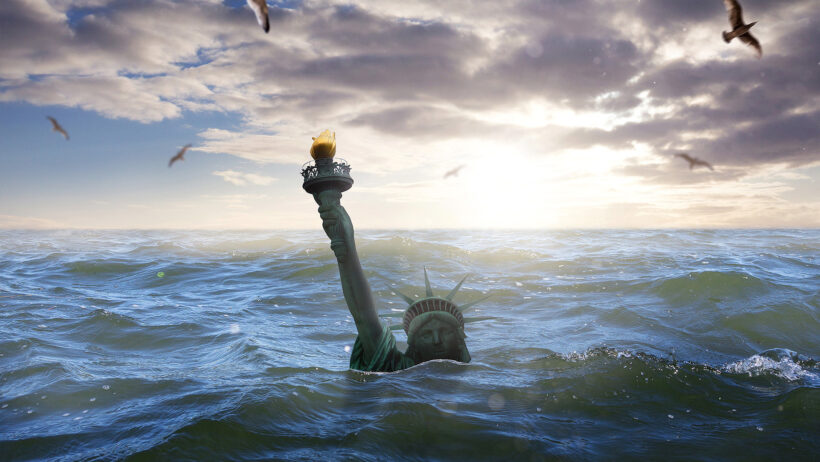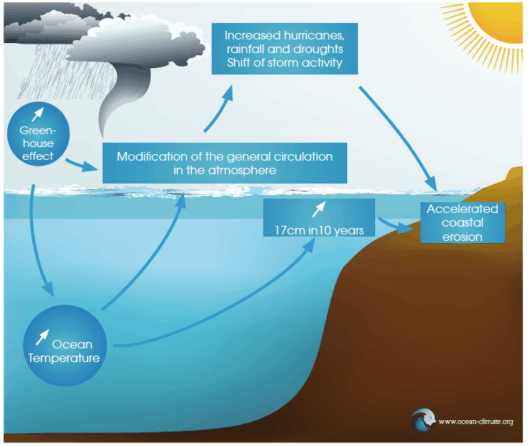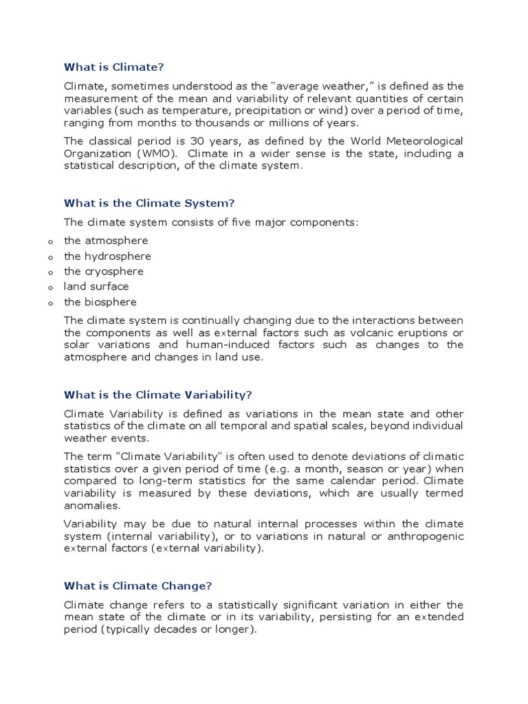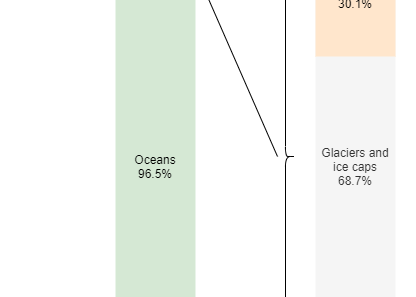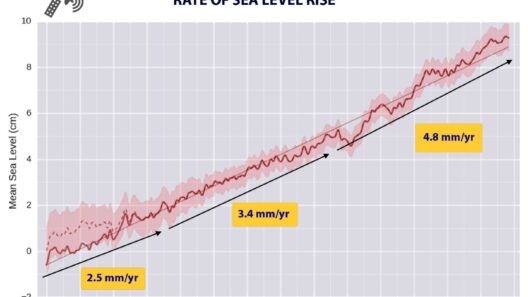As the sun rises over the glistening waters of Florida, one might ponder: Is this idyllic expanse destined to become submerged? The Sunshine State, with its nearly 1,350 miles of coastline, is undoubtedly captivating, yet it faces a looming threat from the rising tides of climate change. As we delve into Florida’s vulnerability to rising sea levels, we encounter a myriad of factors that intertwine climate science, ecological integrity, and human resilience.
Understanding Florida’s complex topography is essential in revealing its susceptibility to inundation. Unlike many other states, Florida is predominantly flat, rendering the land more susceptible to the encroachment of the ocean. With a maximum elevation of only about 345 feet, much of the state lies within mere feet of sea level. This geographical layout exacerbates the potential for catastrophic flooding, particularly during hurricane seasons when storm surges can entail rapid inundation of low-lying areas.
The Intergovernmental Panel on Climate Change (IPCC) has projected that sea levels could rise by as much as three feet by the end of the century. This forecasting compels us to scrutinize the ramifications of such a shift, particularly in a state with sprawling urban developments like Miami and Tampa, which have become icons of thriving coastal life. With the convergence of rising seas and escalating population density, Floridians must grapple with the ensuing challenges as they ponder whether they will remain safe on this land they cherish.
One must consider the interplay between geological vulnerabilities and human activities. The impact of groundwater extraction, deforestation, and concrete development cannot be overstated. When aquifers are depleted, land can sink, creating an additional layer of risk. This phenomenon, known as subsidence, can compound the effects of rising seas. As cities expand, impervious surfaces replace natural landscapes, disallowing water absorption and increasing runoff. The very infrastructure that supports Floridians’ lifestyles now also threatens their existence, presenting a duality in urban development that poses profound questions about sustainability and future viability.
As we examine the statistics, it’s evident that certain Florida locales are poised to face particularly severe consequences. Take Miami-Dade County, for instance. Sea-level rise, exacerbated by climate change, and the phenomenon of “sunny day flooding” already affect its daily life. Citizens find streets submerged during high tides. This peculiar situation leaves many pondering how much longer their pink flamingo-decorated lawns will remain intact.
To mitigate such scenarios, policymakers have begun to take measured steps. Coastal resilience programs, emphasizing natural barriers such as wetlands and mangroves, seek to fortify defenses against the unforgiving ocean. However, the effectiveness of these initiatives relies heavily on community engagement and continued research into environmental science.
Adaptation strategies are on the minds of many Floridians. Managed retreat—a controversial topic—invites discussions about relocating communities. Who would willingly abandon their homes, their memories, or their roots? Such a question pushes us to consider ethical dimensions as we grapple with existential threats. Equity must be at the forefront of these conversations, ensuring that vulnerable populations are not left to face disasters alone, but rather supported by comprehensive, just policies.
Florida’s ecological tapestry is another victim of rising seas. Coastal ecosystems, such as coral reefs and seagrasses, play critical roles in fostering biodiversity. The high salinity from encroaching ocean waters can decimate these habitats, leading to a decline in fish populations and altering ecosystems that many species depend on for survival. This loss of biodiversity ultimately affects the fishing industry, tourism, and the economy, presenting further challenges for Floridians.
The socio-economic consequences of rising sea levels are wide-ranging. Tourism—one of Florida’s most lucrative industries—could bear the brunt of coastal flooding and the deterioration of pristine beaches. Think about it: What entices millions of visitors year after year? The sandy shores, the vibrant nightlife, and the abundance of outdoor activities. If these are compromised, what might the financial repercussions look like for those who rely on this revenue stream?
It is vital to cultivate a sense of urgency surrounding these issues. Citizen activism plays a critical role, from beach clean-ups to participating in town halls focused on climate action. Grassroots movements have the capacity to bring about significant policy reforms, but they require momentum. Floridians must organize, advocate, and lobby for innovative solutions that not only deal with the implications of rising sea levels but also foster sustainable development practices and bolster community engagement.
In closing, the question remains: Will Florida rise to the challenge, or will it be the victim of its exuberant allure? With the daunting specter of rising sea levels looming on the horizon, the state much be prepared to confront ecological, socio-political, and economic transformations. Preparing proactive measures is crucial, as is fostering a well-informed public willing to champion the cause of environmental stewardship. Only by working collectively can Floridians hope to navigate the tumultuous waters ahead, safeguarding their cherished coastal paradise from becoming a footnote in history—a lost land reclaimed by the tides.



